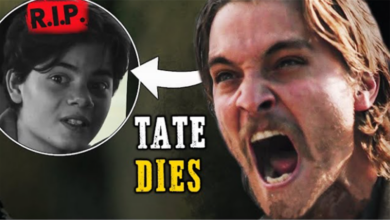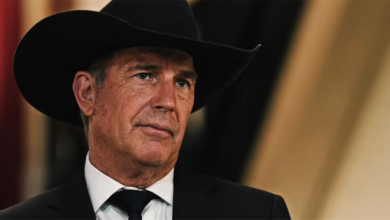The True Story Behind ‘Yellowstone’s Cattle Deaths
"Only Devils Left" portrays the dramatic impact of cattle bloat with a mix of accuracy and dramatic flair.

- Yellowstone Season 2 accurately depicts the dangerous condition of cattle bloat caused by certain plants, like alfalfa, which can be fatal for grass-fed cows.
- The decision to set the ranch on fire in the show was a practical way to dispose of the dead cattle, but the prevention of alfalfa overgrowth is less logical.
- The dramatic depiction of cattle bloat in Yellowstone adds to the captivating and realistic narratives of the show, combining reality and fantasy for engaging storytelling.
With Yellowstone Season 2 premiering on CBS, now is the perfect time to get caught up on some of the more technical elements behind the show, primarily the real-life ranch problems regularly facing cattlemen. Season 2, Episode 4, titled “Only Devils Left,” opens with large bails of what looks to be grass being dropped from an airplane under the cover of night. In the bright light of day, Rip (Cole Hauser), Kayce (Luke Grimes), and Jimmy (Jefferson White) discover a grim sight: hundreds of dead and dying cattle for as far as the eye can see. With an emergency call placed to John Dutton III (Kevin Costner), the cowboys start looking for the deadly culprit. Dutton shows up, and they quickly discover alfalfa hay strewn among the dry grass. Dutton remarks that they will likely have to burn the entire field to destroy the cattle remains and the alfalfa hay.
Though Yellowstone does an excellent job of explaining its more technical points, most people need help understanding the inner workings of cattle ranches, including grazing and feeding. Ranching is an incredibly complex industry that involves a deep understanding of livestock and horticulture. For the most part, many ranchers agree that Yellowstone represents the cattle ranching industry with tremendous accuracy, thanks to Taylor Sheridan‘s firsthand experience on his family’s ranch growing up. The series gets a lot right, and this episode is an excellent example of how fantastical facts can make for significant dramatic effect.
‘Yellowstone’ Gets the Truth Behind Cattle Bloat (Mostly) Right








